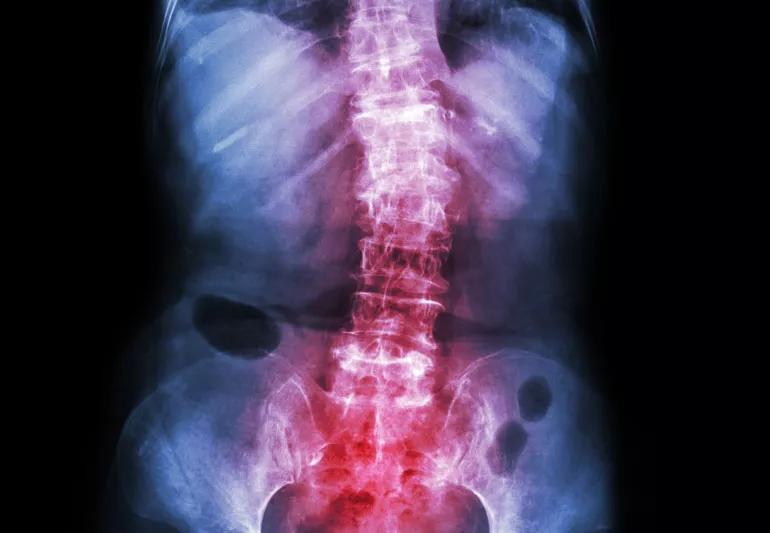Advertisement
You have more control than you think

You may have more power over adult scoliosis than you think. Doctors can offer you various treatment options, and there are things you can do to help yourself. Here are five things you might be surprised to hear about adult scoliosis.
Advertisement
Cleveland Clinic is a non-profit academic medical center. Advertising on our site helps support our mission. We do not endorse non-Cleveland Clinic products or services. Policy
When diagnosed with scoliosis, many people fear the only course of action will be major surgery.
“Only a small portion of people with scoliosis require major reconstructive surgery,” says spine surgeon Douglas Orr, MD. “Many people with scoliosis can manage their symptoms just fine without any type of surgery.”
In many cases, treatment for scoliosis is aimed at relieving symptoms rather than fixing the curve in the spine.
Adult scoliosis patients are initially treated as we would treat a patient with a straight spine who has back pain.
Treatment might include physical therapy to strengthen and stabilize the spine. It might also include anti-inflammatory medications or epidural injections to relieve pain.
People who can’t get pain relief from medications or physical therapy might need spinal decompression surgery.
“If you’re considering surgery for scoliosis, talk to your surgeon and find out how many spinal deformity procedures they perform each year,” Dr. Orr says. “You want to make sure your surgery is done by someone who specializes in these types of procedures.”
As you age, your spine begins to deteriorate. As it weakens, it may also begin to curve. Some people may never have any symptoms. Others might experience leg pain, numbness or tingling when walking and/or back pain.
“If you look at a person from the side, you can see that the spine has three natural curves; one in the lower back, one in the middle of the back, and one at the neck. We tend to lose the curve in the lower back as we age. That’s what creates problems and causes symptoms,” says Dr. Orr.
Advertisement
Doctors see two types of scoliosis in adults. One is the type of scoliosis doctors also see in teenagers. This is called idiopathic scoliosis. In some cases, the curve progresses and begins to cause symptoms in adulthood. In other cases, it is not diagnosed until adulthood.
The second common type of scoliosis seen in adults is degenerative scoliosis. In this type, the normal wear and tear on the lower back during the aging process leads to the development of a curve in the spine.
In addition to seeking treatment for scoliosis, there are things you can do at home to reduce your symptoms. “The most important thing you can do is not smoke,” says Dr. Orr.
Smoking is the leading preventable cause of back and neck problems.
Although many people who have scoliosis have been told to limit their activities, Dr. Orr disagrees. “The more physically active people with scoliosis are, the less likely they are to be symptomatic,” he says. If you are overweight, weight loss can also help to reduce scoliosis symptoms. It’s also important to monitor your bone density and seek treatment if you have osteoporosis.
Advertisement
Learn more about our editorial process.
Advertisement

This satisfying, involuntary act of yawning and stretching helps release tight muscles

If soaking your feet, disinfecting your shoes and making lifestyle changes don’t do the job, it’s time to talk to a doctor

Genetics, hormones, medications and stress are just a few reasons your feet could be extra funky

While an ultrasound shows your muscles and tendons, an MRI also shows your joint cartilage, bones and heart chambers

Sitting for long hours, like at your desk job, can make your butt sag — among other effects

Research doesn’t show any benefits to wearing copper bracelets — but your experience may vary

Rest, physical therapy, pain relief medication and steroid injections may be able to help instead

Your choice depends on your reason and need for treatment

If you’re feeling short of breath, sleep can be tough — propping yourself up or sleeping on your side may help

If you fear the unknown or find yourself needing reassurance often, you may identify with this attachment style

If you’re looking to boost your gut health, it’s better to get fiber from whole foods